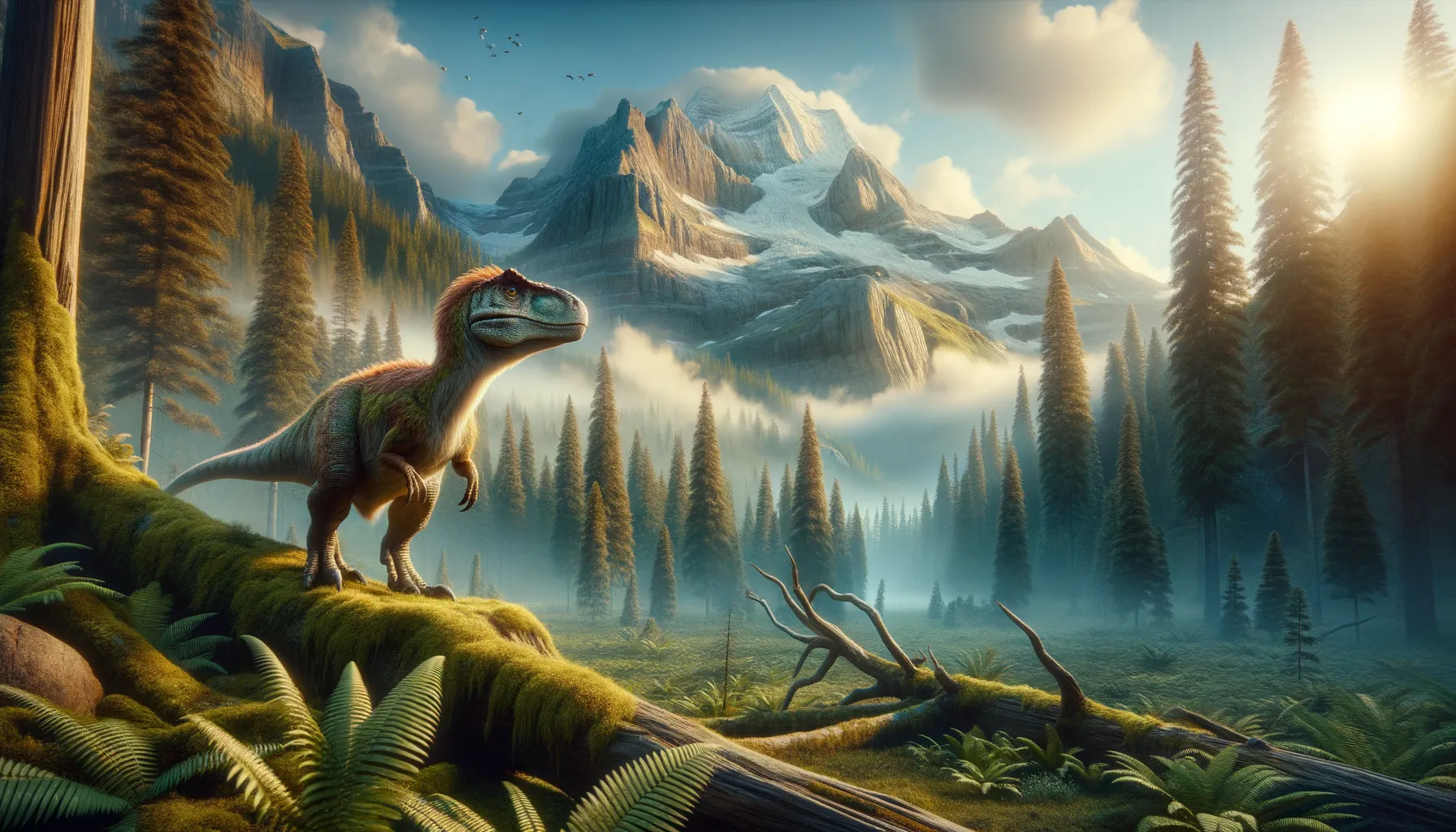
Tichosteus
A mystery from the Jurassic past!
Period
Jurassic
Length
Likely around 1 to 1.5 meters long.
Height
Exact height unknown, but probably small.
Weight
Estimated to be fairly lightweight.
Tichosteus was a small dinosaur from the late Jurassic period, thought to have been a part of the ornithopod group. Despite its fragmentary fossil record, scientists believe it was lightweight and likely agile, adapting well to its environment. However, much about this dinosaur remains a mystery due to the limited number of fossils discovered.
Diet
Tichosteus was likely herbivorous, feeding on the available vegetation in its environment. Its diet might have consisted of plants, leaves, and fruits within its habitat.
Hunting
Being herbivorous, Tichosteus did not hunt but foraged for its food. It likely used its agility to navigate dense foliage to find enough food.
Environmental challenges
As part of a competitive ecosystem, Tichosteus faced challenges like finding enough food and avoiding predators. Surviving in a variable climate with potential droughts made resilience a vital trait. Being a small herbivore, it had to efficiently utilize its habitat to sustain itself amidst environmental pressures.
Speed
Exact speed unknown, likely moderate.
Lifespan
Specific lifespan unrecorded.
First discovery
Discovered in the late 1800s in North America.
Fun Facts
- Tichosteus is a genus of dinosaur known from very fragmentary fossils, which makes it quite the mystery for paleontologists.
- It is believed to have lived during the Late Jurassic period, around 150 million years ago.
- Fossils attributed to Tichosteus were first discovered in the Morrison Formation, a famous site for Jurassic dinosaurs in North America.
- The name Tichosteus means 'wall bone', a reference to the original fossil beds where the remains were found.
- While some scientists suggest it might have been a small-bodied dinosaur, its exact size and appearance remain largely speculative.
- Tichosteus adds to the intrigue of the dinosaur world, encouraging paleontologists to piece together information from limited fossil evidence.
- The uncertainty surrounding Tichosteus highlights how much there is still to learn about the diverse world of dinosaurs.
Growth and Development
The development patterns of Tichosteus are not well-documented, but as with many dinosaurs, it likely underwent rapid growth after hatching before slowing as it matured. This rapid growth would have helped it avoid predation in its vulnerable juvenile stages.
Habitat
Tichosteus lived in a landscape that was lush with vegetation during the Jurassic period. Its environment would have been dominated by large conifers, ferns, and cycads, providing ample food sources. This lush habitat also supported a wide range of animal life, from large predators to other herbivores.
Interaction with other species
Tichosteus likely coexisted with various herbivorous and carnivorous dinosaurs within its habitat. Competition for food sources among herbivores was probable, yet mutualism with certain species might have occurred. It had to be wary of predatory dinosaurs, which could have included larger theropods.
Natural lifespan
The natural lifespan of Tichosteus remains speculative.
Reproduction
Reproductive habits are unknown, but like many dinosaurs, it probably laid eggs. Nesting behaviors would have included choosing environments where the eggs were protected from predators and environmental extremes.
Social behaviour
The social behavior of Tichosteus is undocumented, though it might have lived solitarily or in small groups for better protection against predators. Group behaviors would have enabled better foraging efficiency and communal defense.
Fossil locations
Fossils of Tichosteus have primarily been found in North America, particularly in the Morrison Formation. However, due to the rarity and fragmentary nature of these fossils, comprehensive information about its distribution is limited. This dearth leaves much of its historical range a subject of interest for paleontologists.
